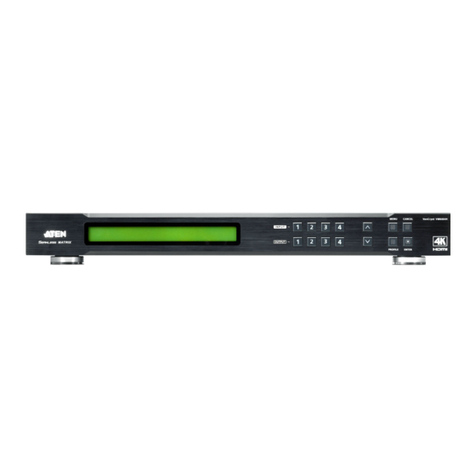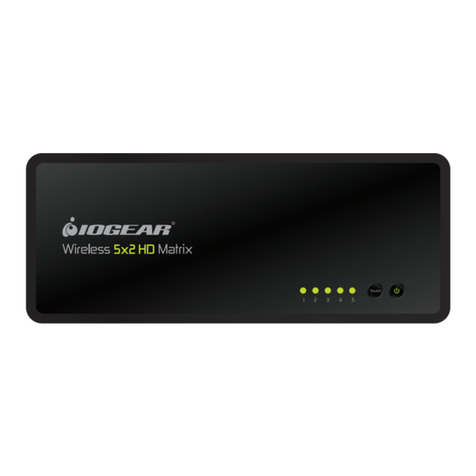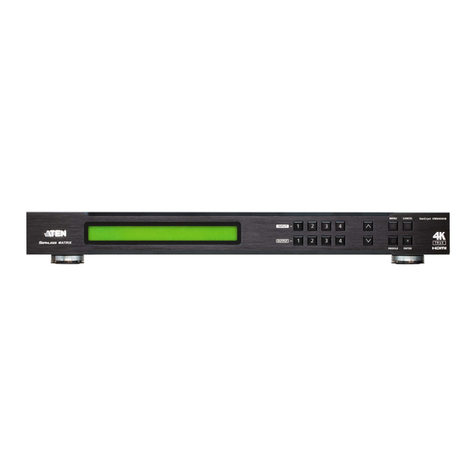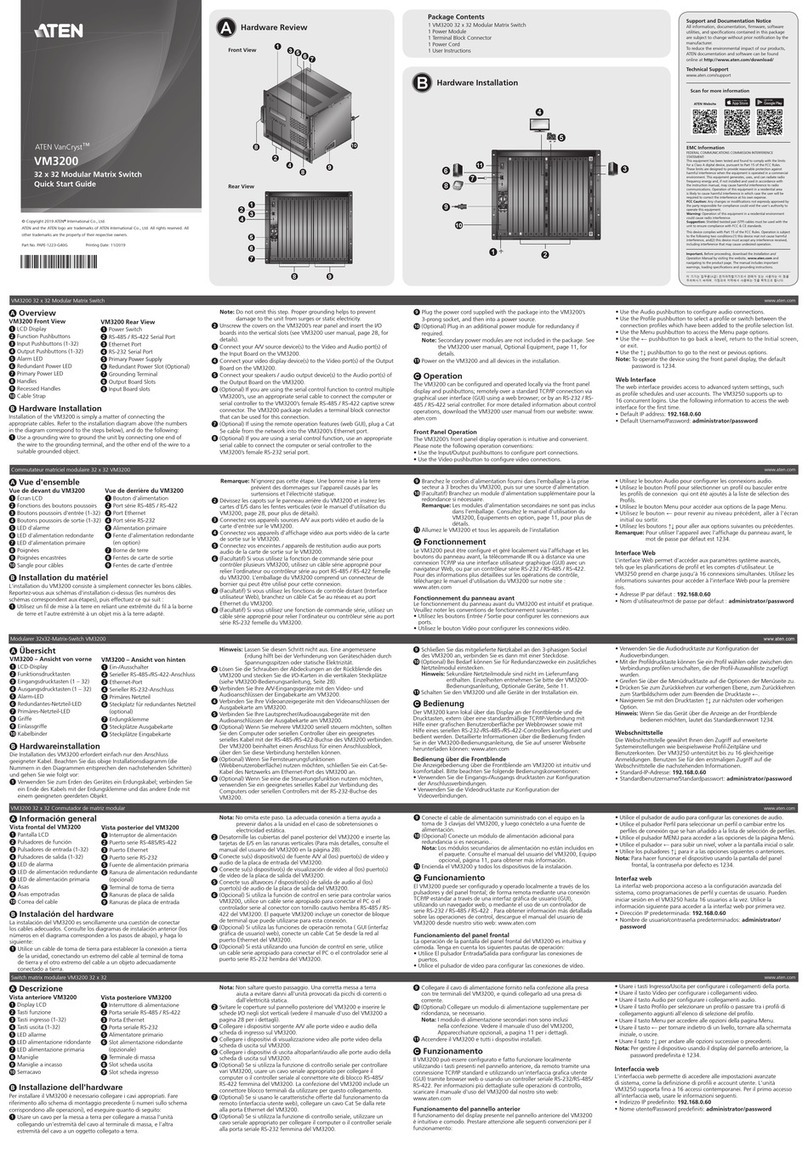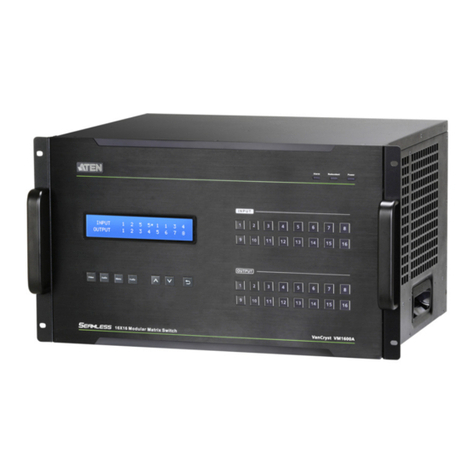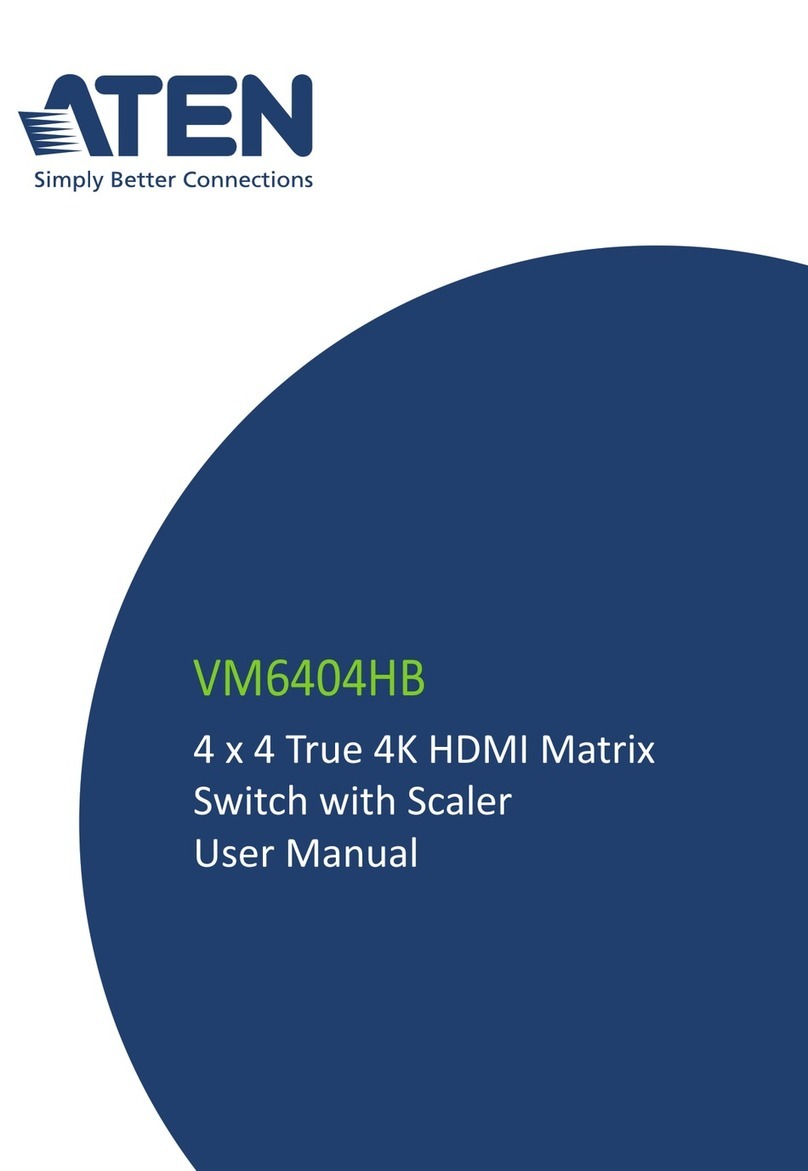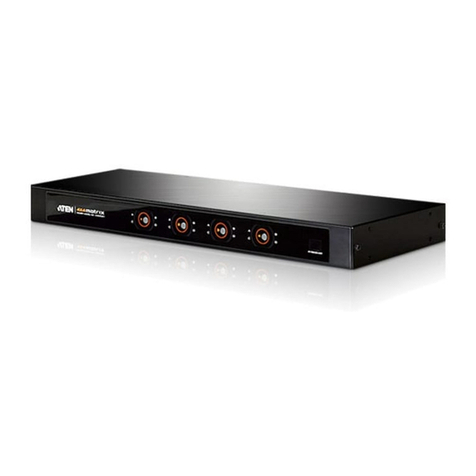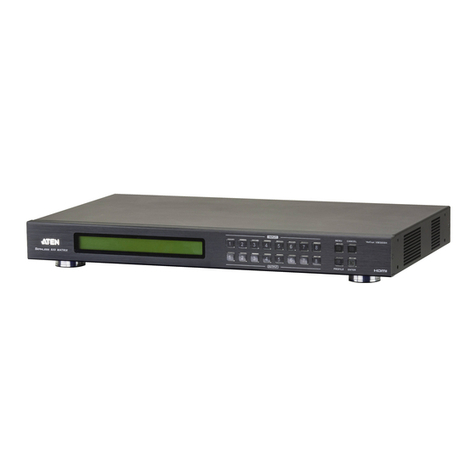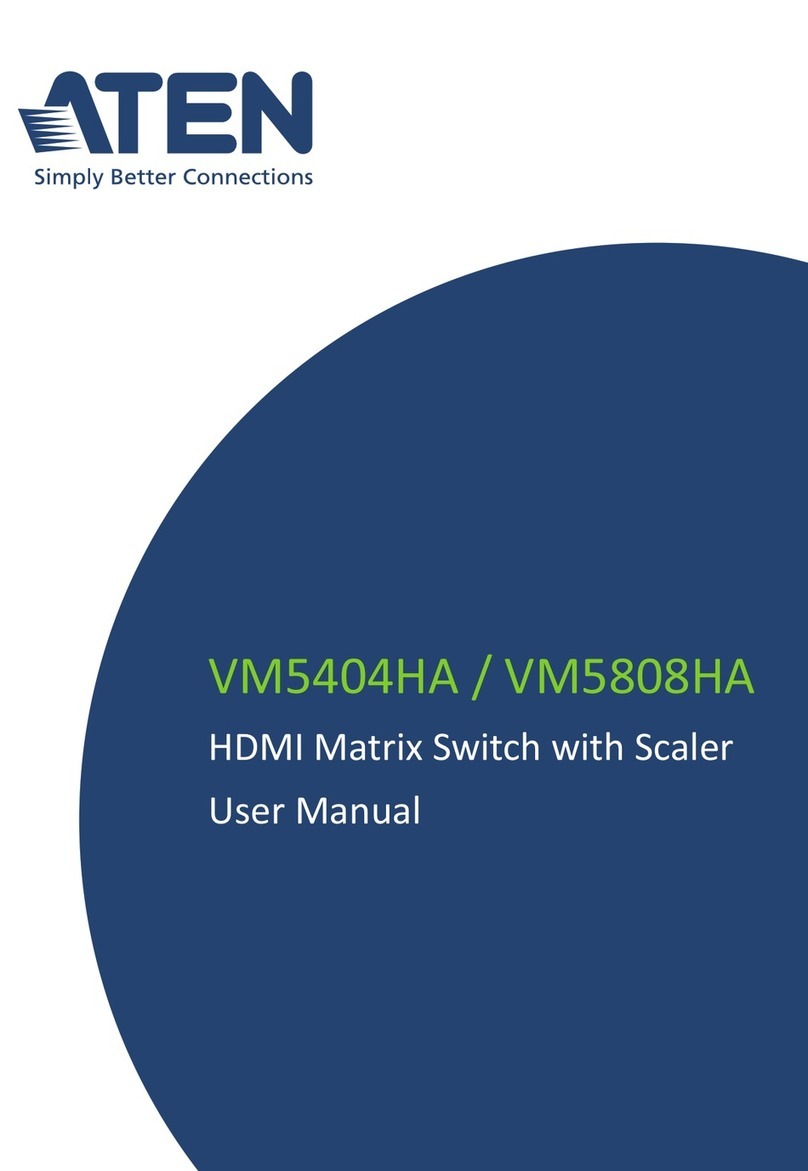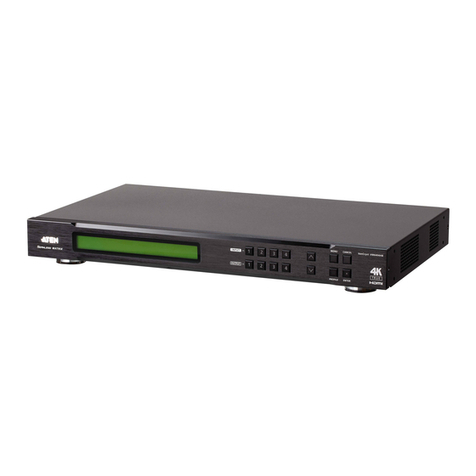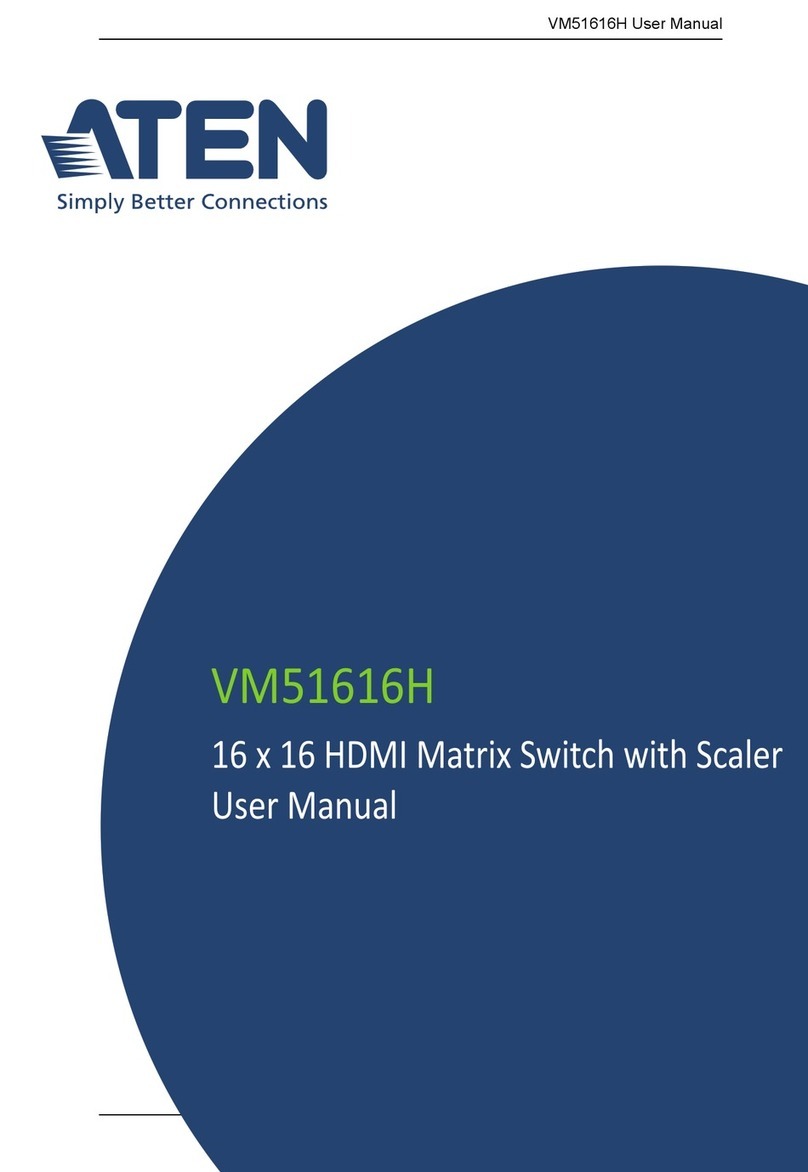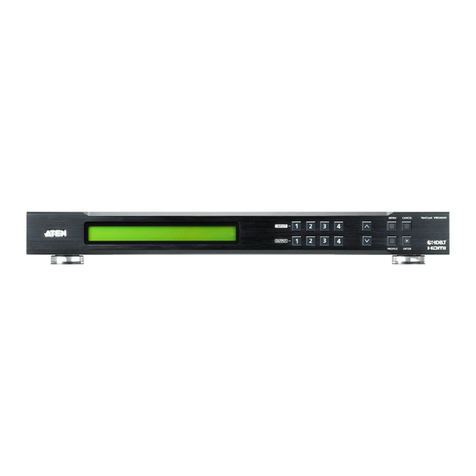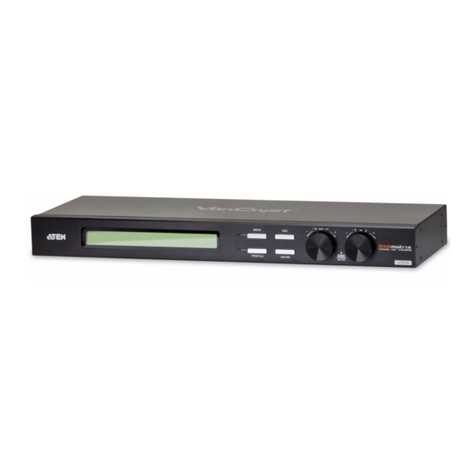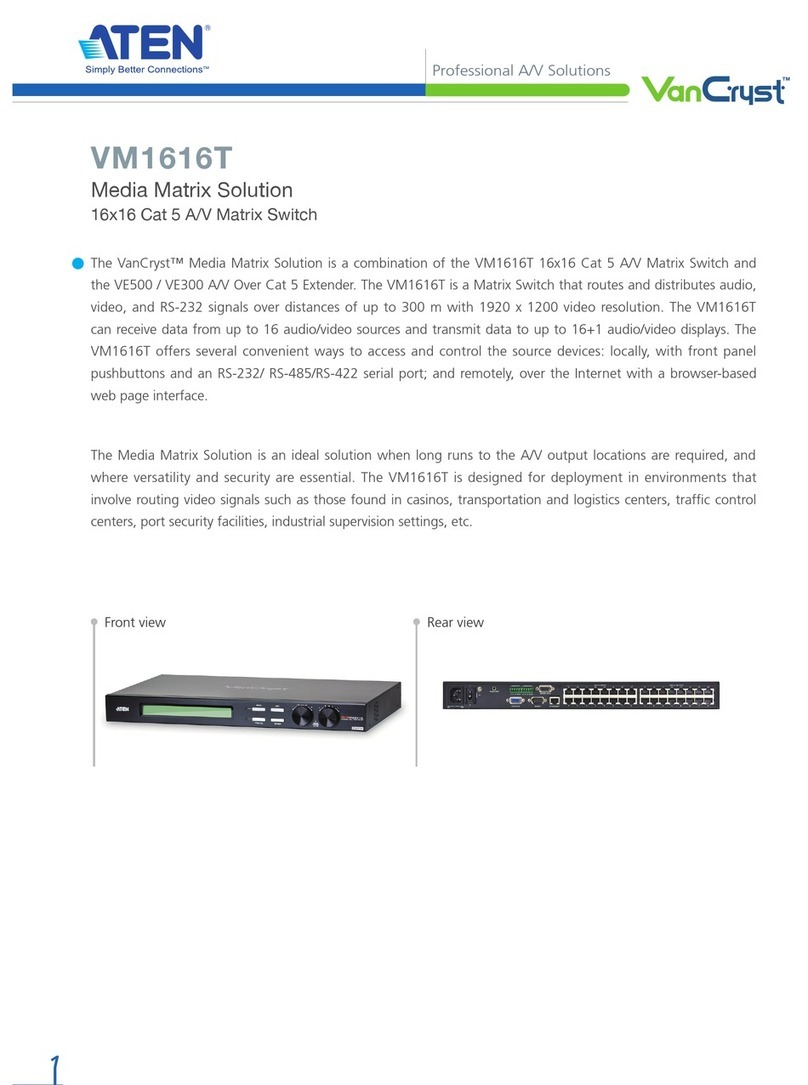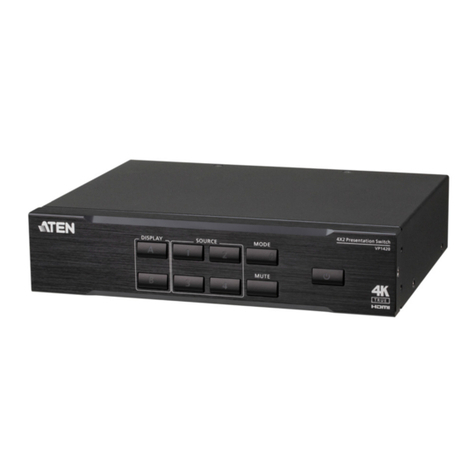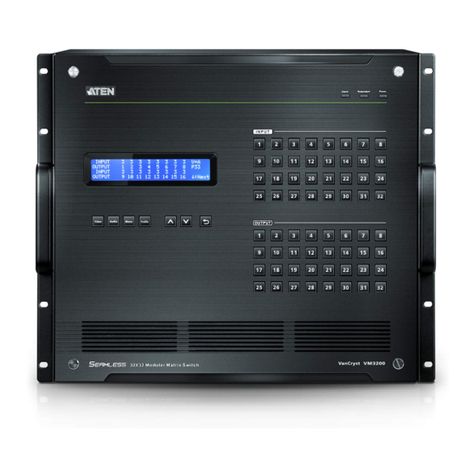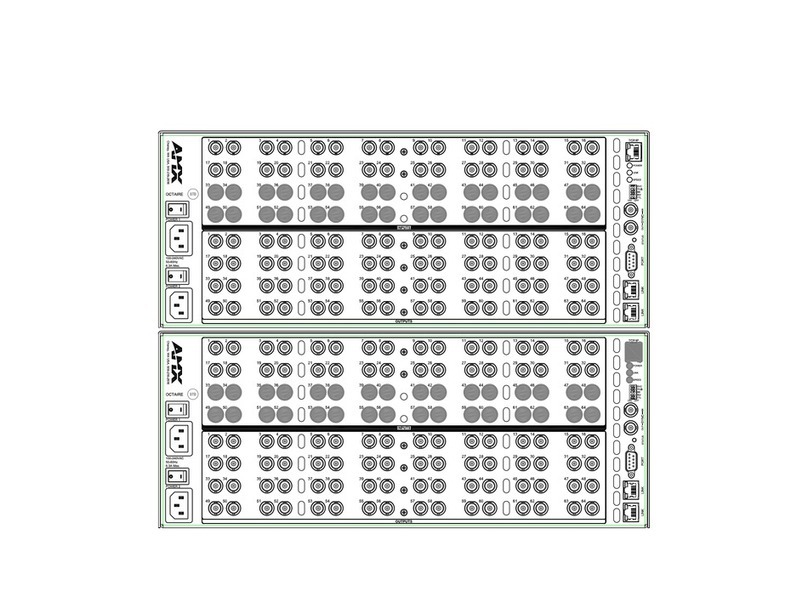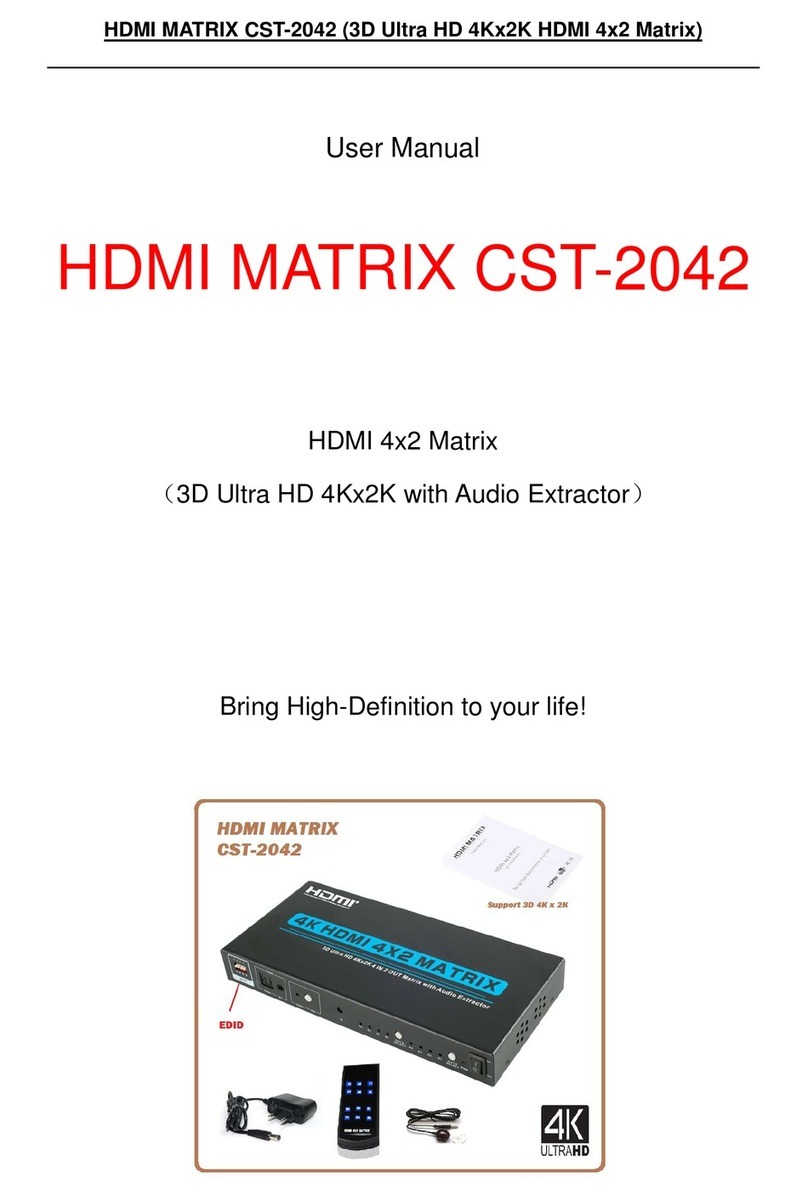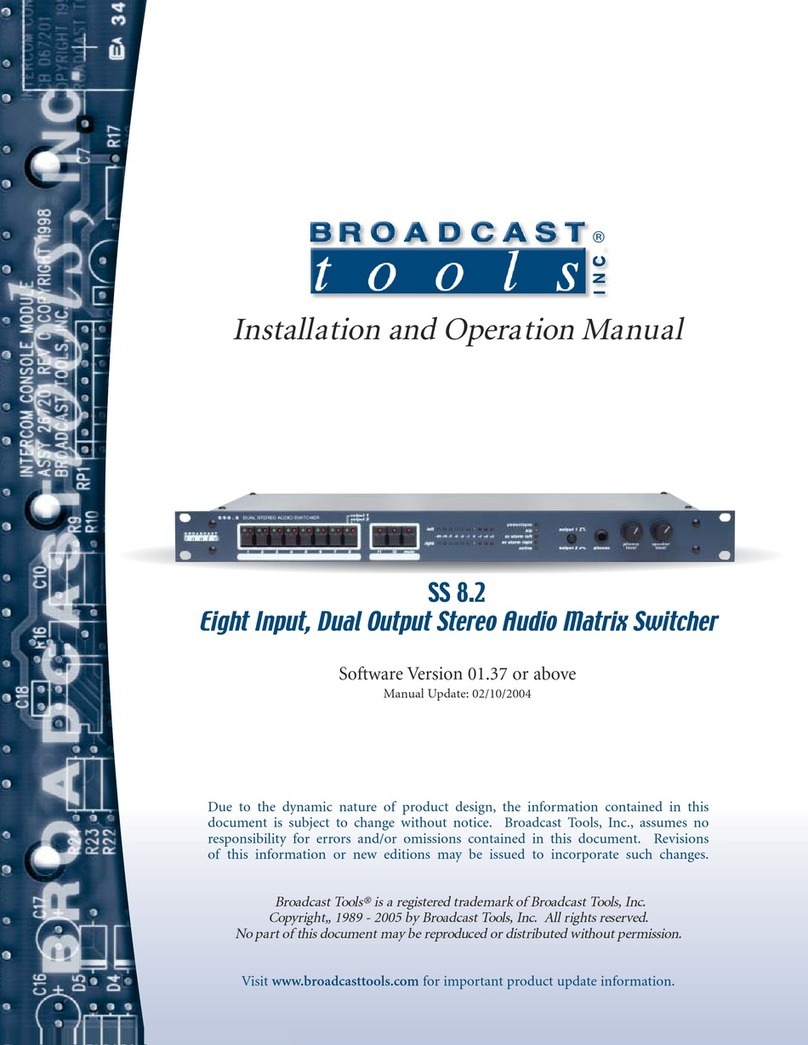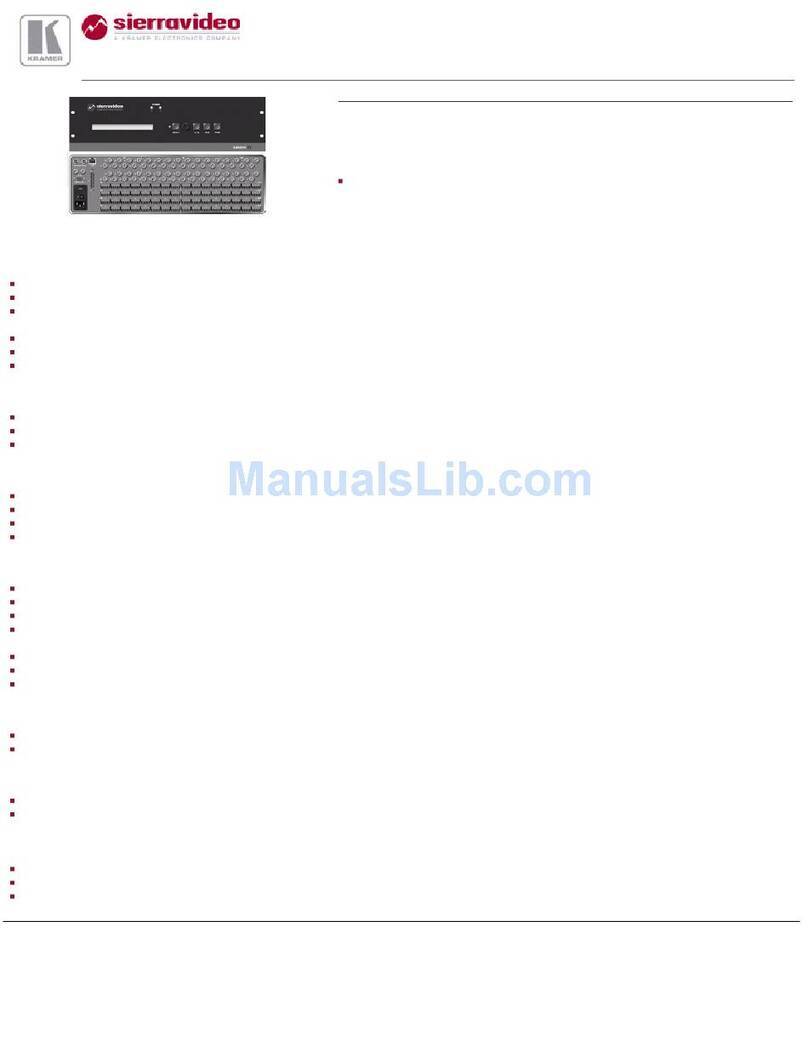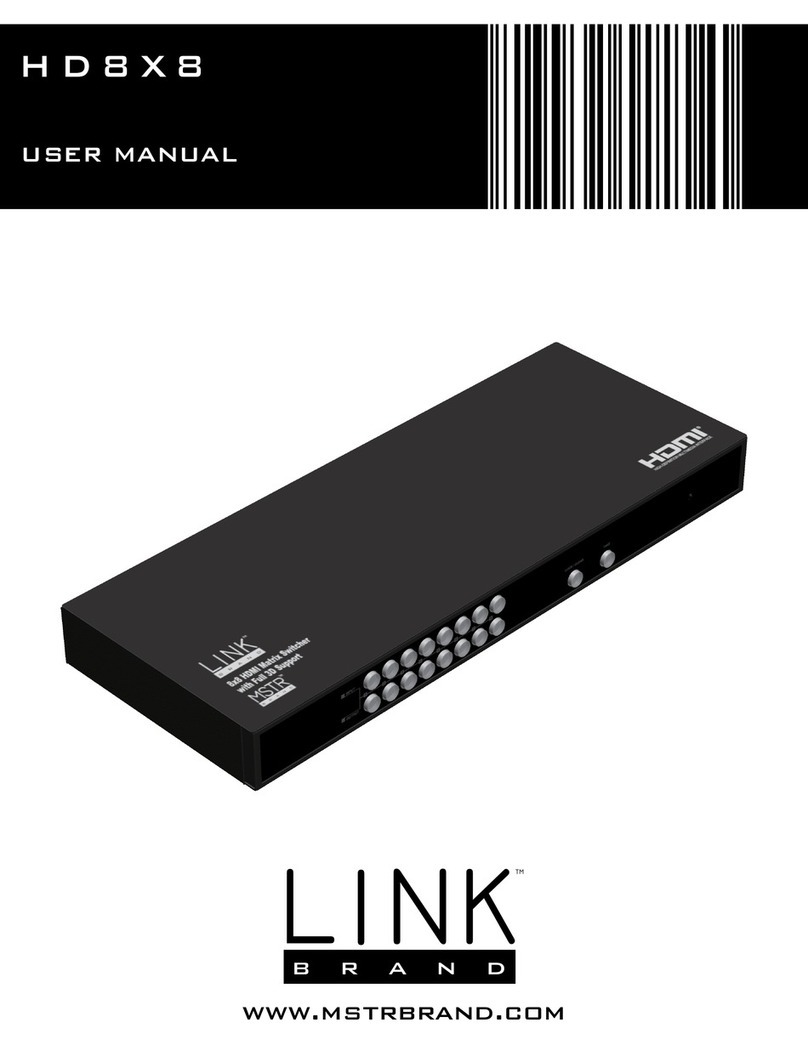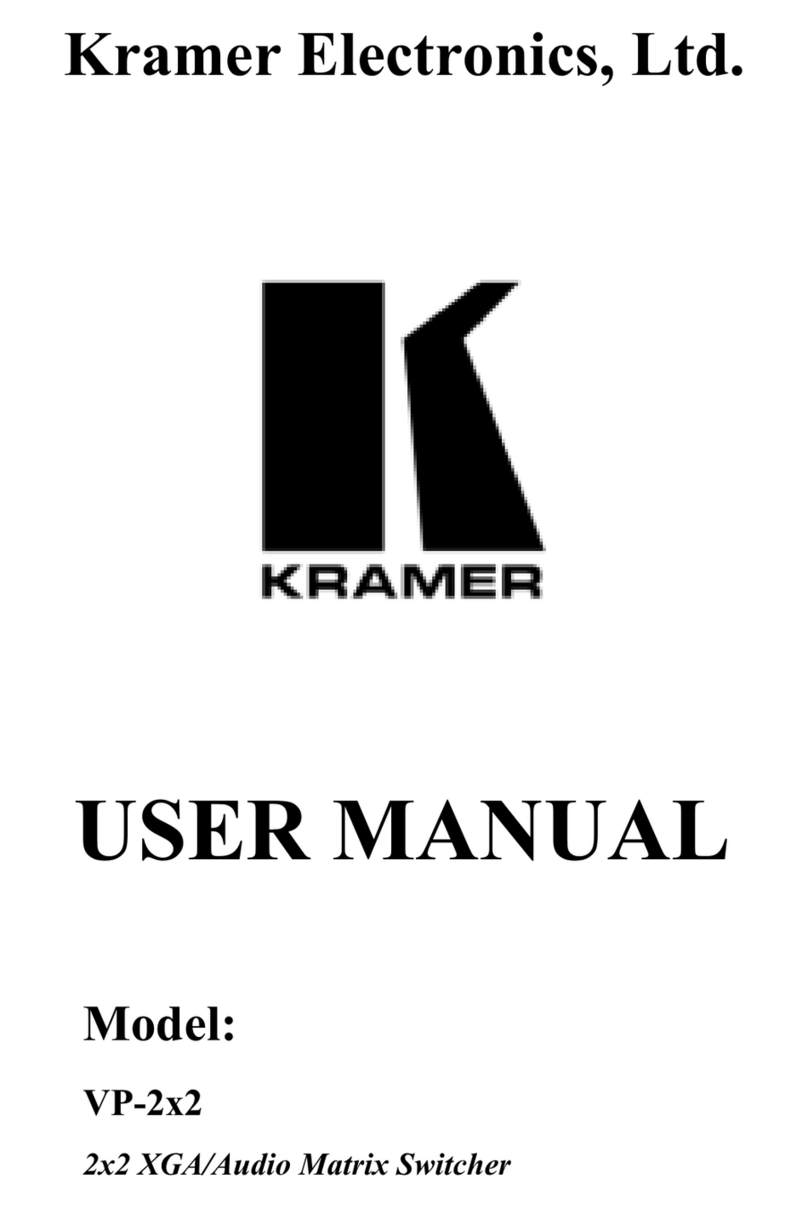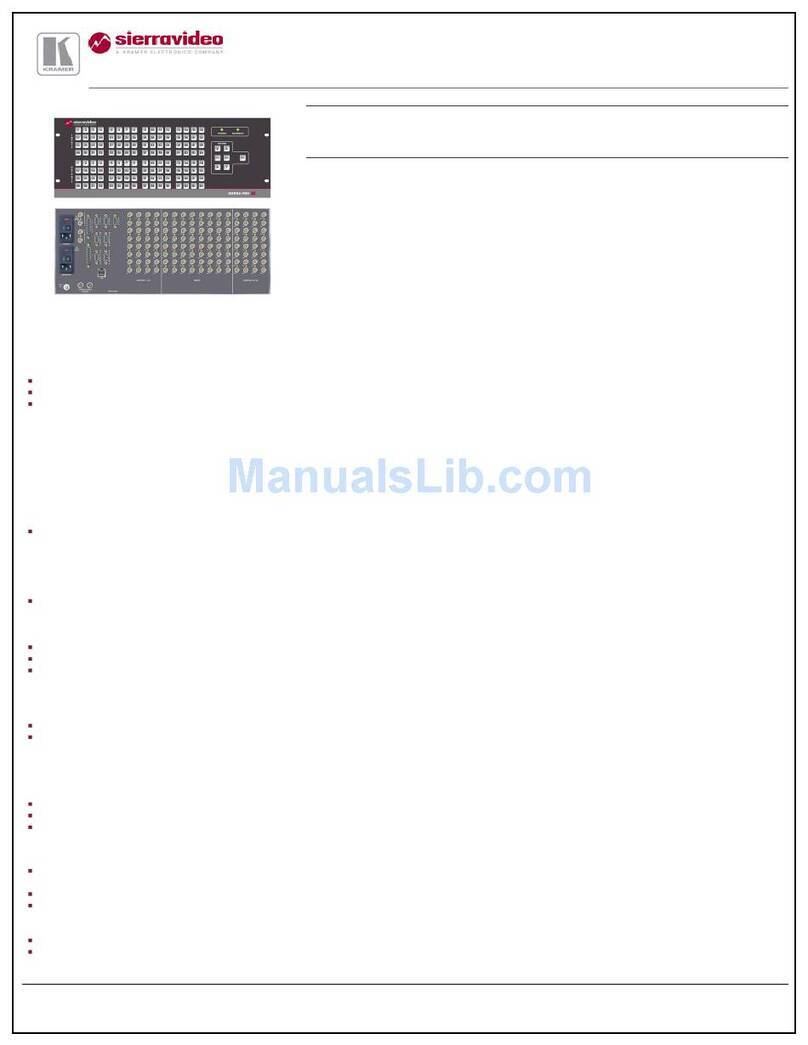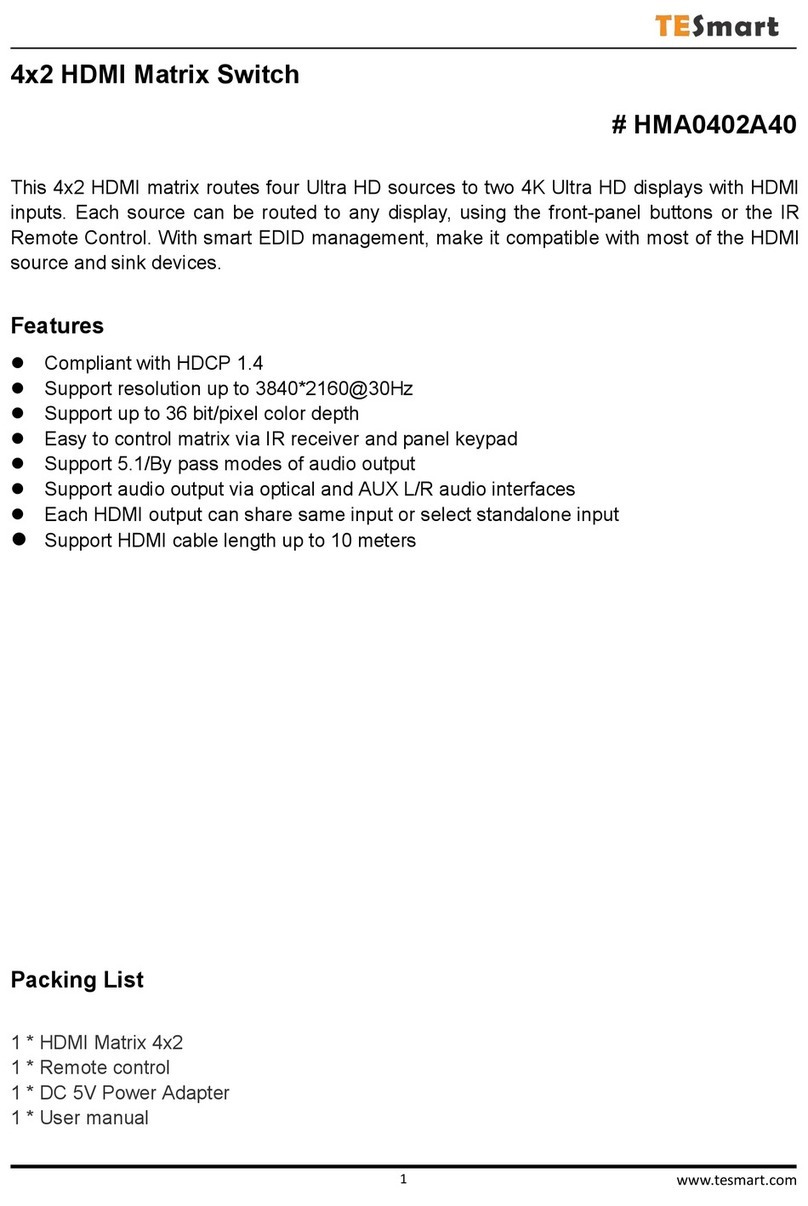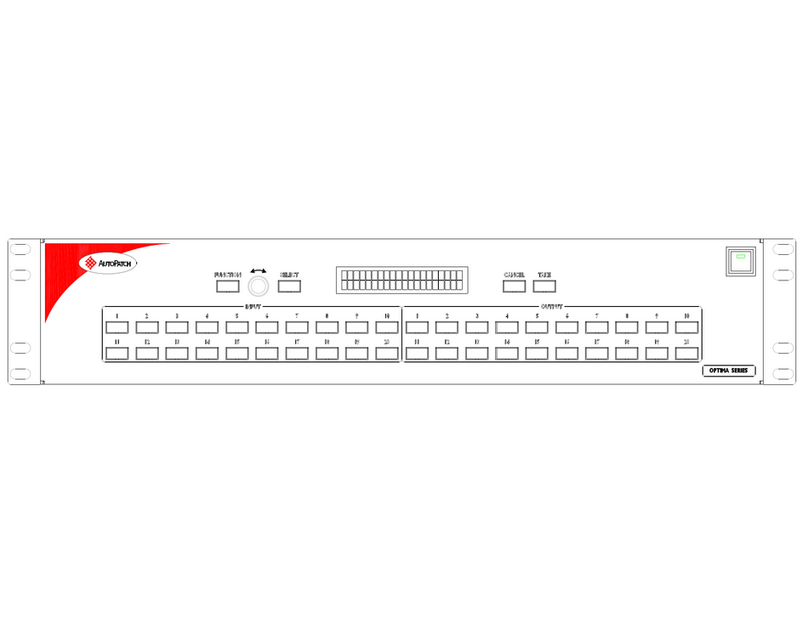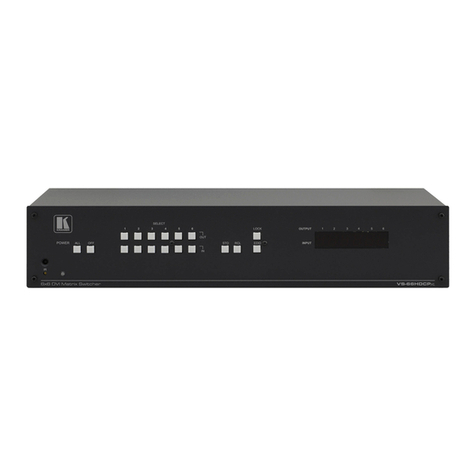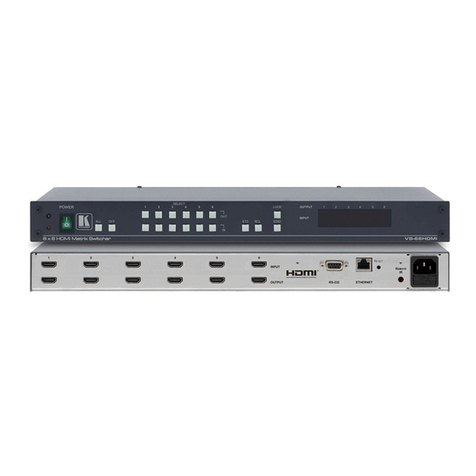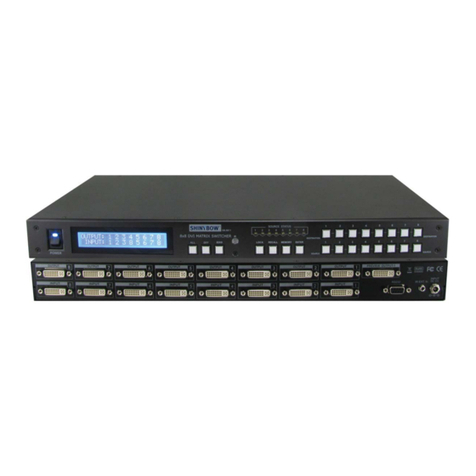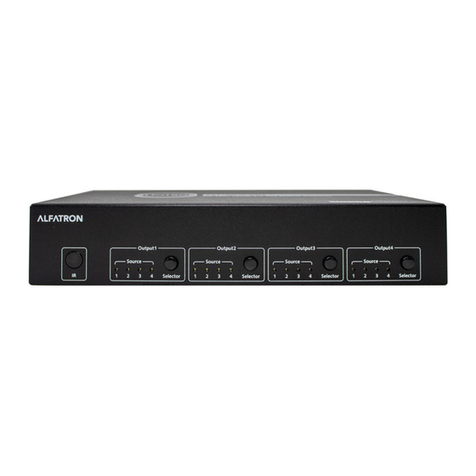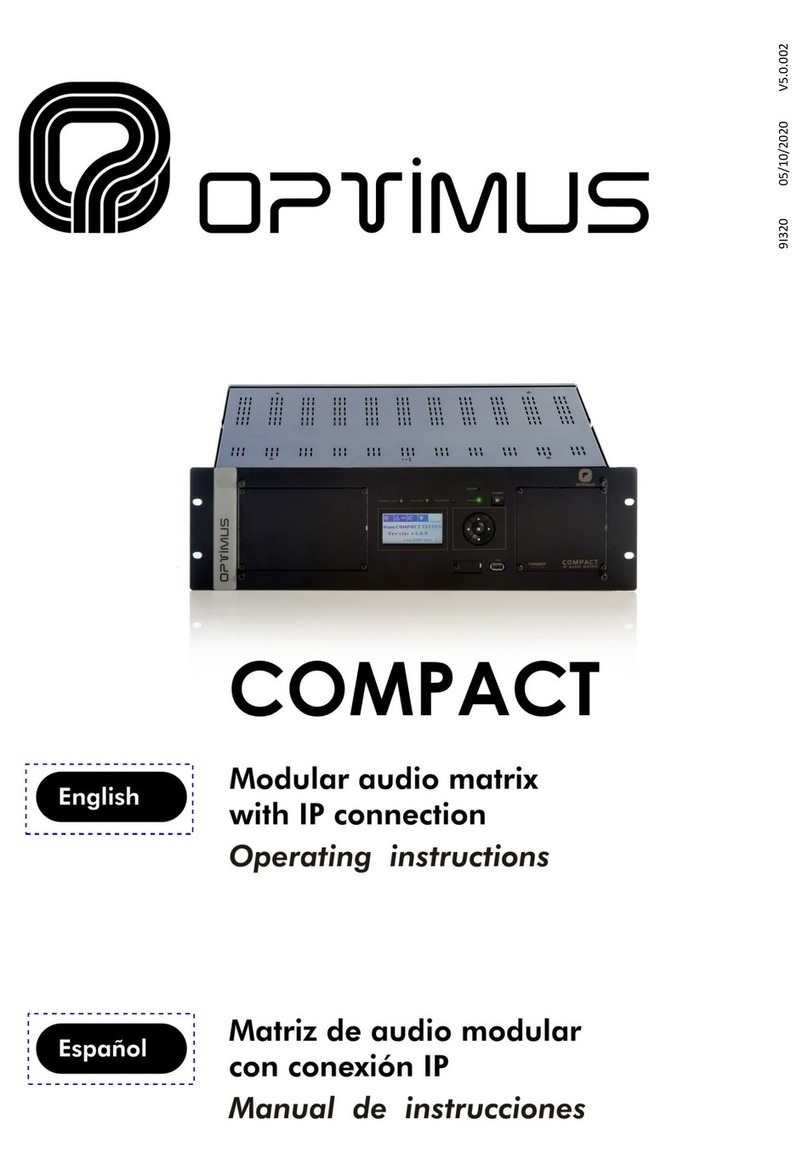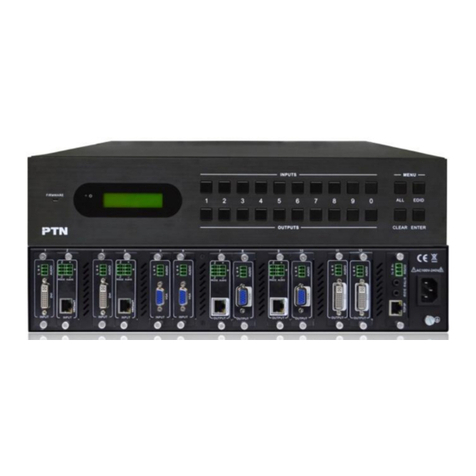
PMichael Breymann’s Background
I am a freelance CGI artist specializing in 3D environments and FX for the film industry. My primary interest in a KVM
switch is to maintain consistency in performance with the mouse and keyboard over multiple operating systems and
display devices. In my production environment, I often switch between Windows, OSX, and Linux to leverage different
software against task requirements, and the ability to tie each machine to one set of keyboard, mouse, and monitors ef-
ficiently manages this juggling. Since I work at a single desk in a tight corner (everything fits in a 6x6 space), I am also
limited by how much equipment I can physically arrange--so switching inputs to one set of monitors eliminates unneces-
sary clutter.
One aspect that is critical to the kind of work I do is maintaining a consistent representation of color. Due to the varied
gamma responses of different display devices--not to mention the built-in color management applied by various manu-
facturers--switching between multiple monitors disrupts the workflow and can introduce red herrings. While it is common
to have a dedicated monitor for color evaluations, or to try to maintain calibration of multiple displays, it is more advanta-
geous to reduce the variables entirely by converging multiple inputs into one display output.
There are many switches on the market, but most fall into two categories: the cheap and the expensive. Very few fit nicely
into the middle-ground aimed at prosumers, with the features required to make them useful in a post-production setting.
Even fewer allow users to monitor two computers simultaneously. ATEN’s CM0264 is an exception.
PSetup
An early-generation dual processor Mac Pro with 4GB RAM running OSX•Two Dell 24” flat panel LCDs•An old dual processor Xeon CPU running Ubuntu Linux•A MacBook Pro with dual-boot into OSX and Windows 7•A Wacom tablet, generic keyboard and mouse•
PThe CM0264 Unit
The CM0264 is compact and sturdy, housed in a metal casing with a
no-frills front: four buttons for switching the inputs, and three ports for
optional headphones/line-in, and USB connections. Each input switch
has three light indicators, to show which components are active. Certain
components can be activated and deactivated by depressing the switch
buttons in succession. If I want to listen to the audio of input one while
watching the video of input two, for example, I press the input button
several times until only the components I want are illuminated. At first,
I found this to be an unintuitive way of activating and deactivating the
input components, but after a while, I came to appreciate the simplicity of the interface. Since I don’t often need to have
an array of input components working together, I prefer to have that complexity “hidden” by a single button that performs
multiple actions.
Setting up the unit is simple. The instructions provided offer some education on more advanced features such as switch-
ing between dual and single displays, but for the most part everything about the CM0264 is straightforward: all cable
inputs and outputs go into and out of the back of the unit, and each connection block is clearly labeled. You don’t even
need to provide your own cables; the CM0264 ships with cable sets that are specifically designed to prevent entangle-
ment. This is especially nice considering the ludicrous price of cables at many consumer electronics stores. Though the
CM0264 allows for two DVI and two HDMI inputs, it can easily be configured with a DVI->HDMI or HDMI->DVI adapter to
allow for different configurations. It should be pointed out, though, that a swiveling adapter is necessary due to the tight
spacing between connections on the back of the unit.
Product Review
